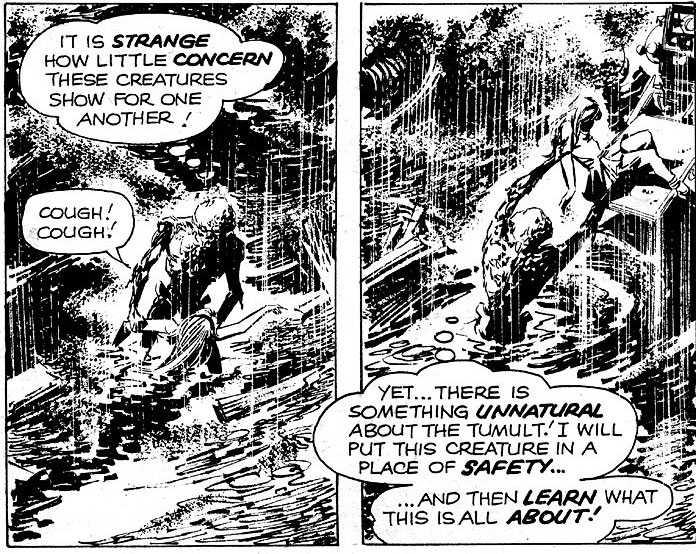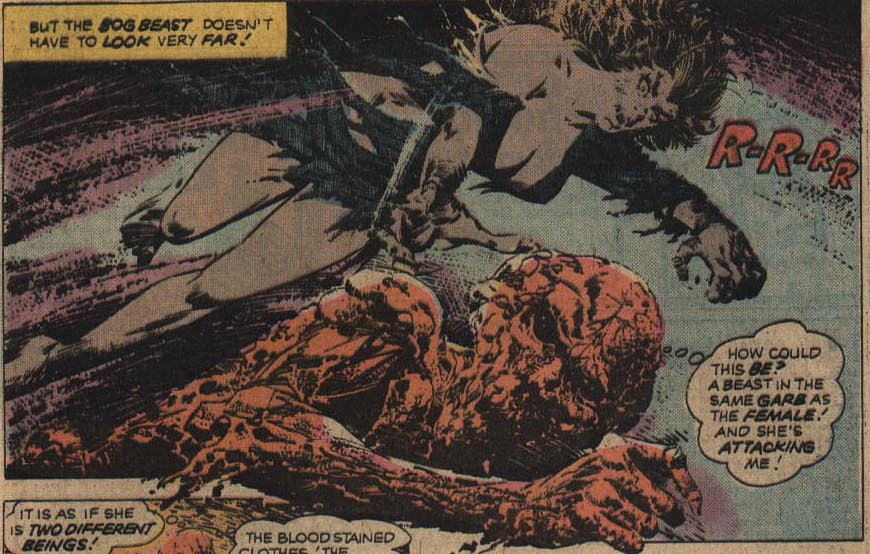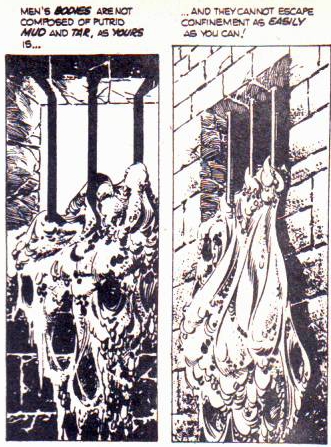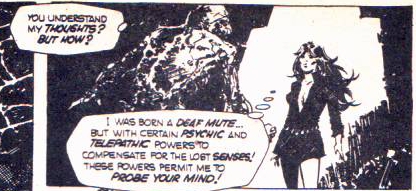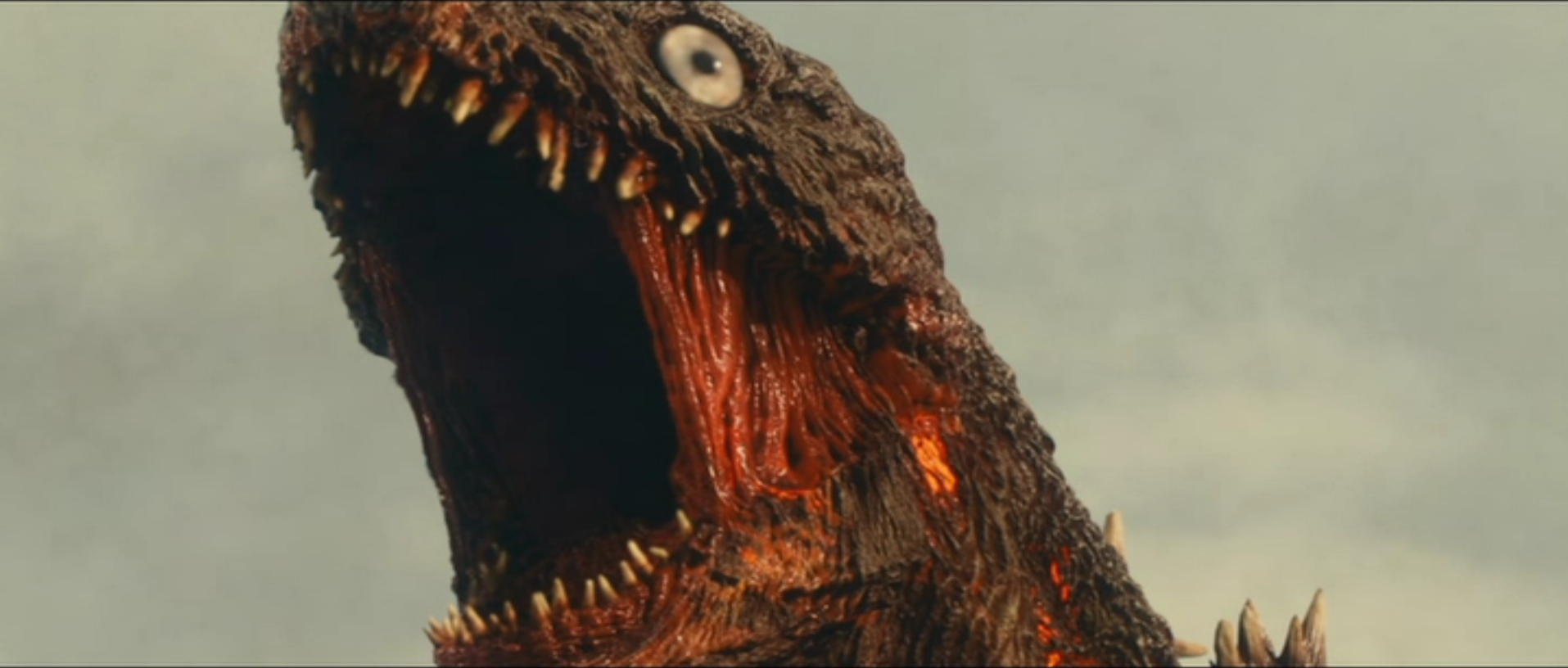
Structurally, it is closest to the 1954 Godzilla or The Return of Godzilla. But those two films do not have Godzilla fighting a monster. In Shin Godzilla Godzilla is pitted against the lumbering, inhuman monstrosity that is the Japanese government's bureaucracy. And in fact, this is exactly the sort of subtle humor that runs through the film. Despite being a grim depiction of a nation in crisis, there are tiny touches of humor that keep it from being an overwhelmingly dark experience.
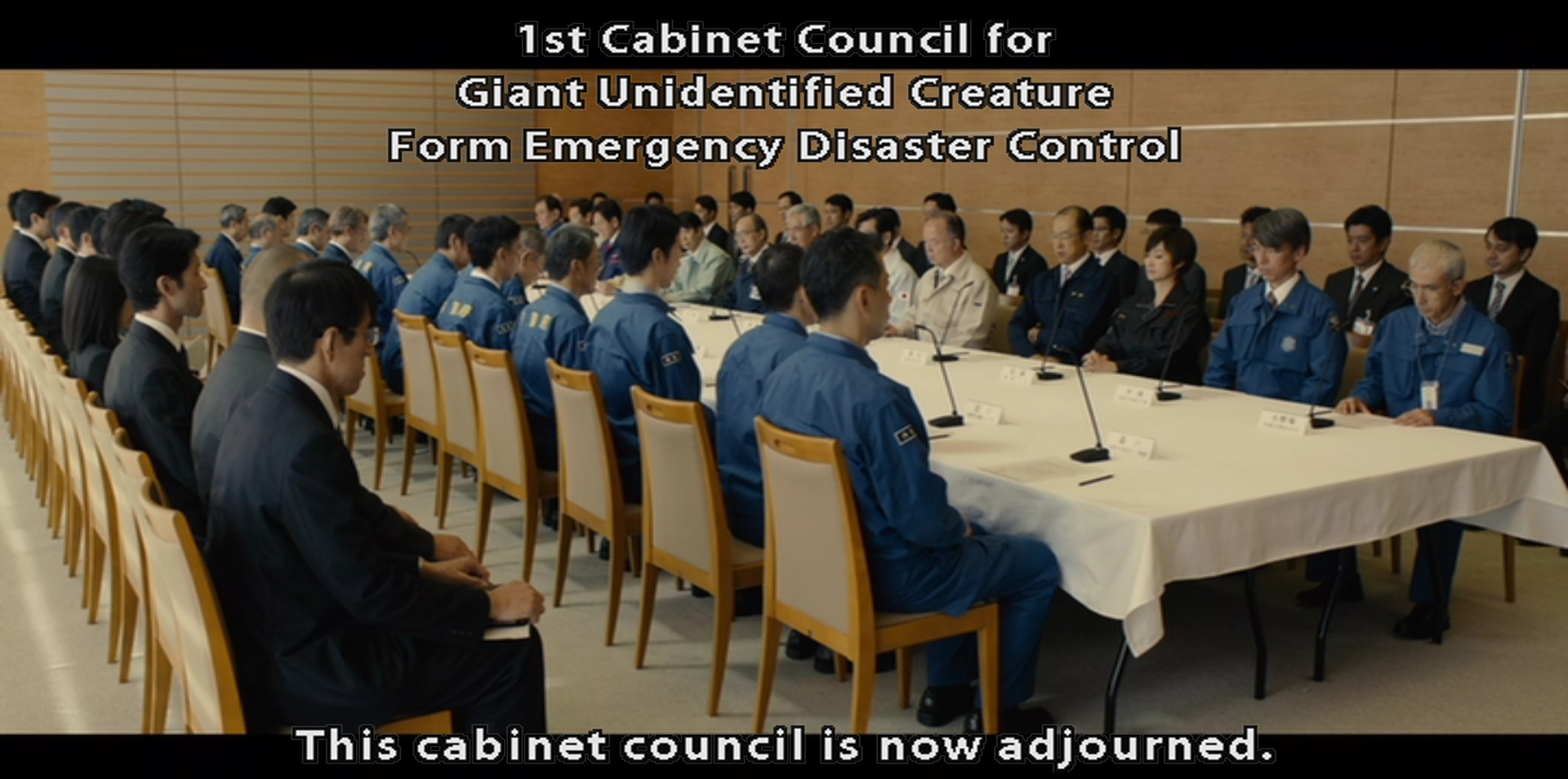
The film is firmly rooted in Godzilla's history, very specifically, the 1954 film. Godzilla attacks twice. First it comes ashore and destroys the Shinagawa district, and then returns to the sea. It attacks again, is met with much stiffer resistance, and only after being attacked does it return fire with its atomic breath. At the same time, directors Hideako Anno and Shinji Higuchi (who directed the special effects for the Shûsuke Kaneko's Gamera films) maintain a very delicate balancing act between the past and the present. There is a lot of homage in the film. It starts with a boat, as did so many Godzilla films, but this time, it's the abandoned boat of a biology professor. And there are little details as to what happened that the film doesn't address: the shoes neatly placed next to each other indicate Professor Goro Maki killed himself. Why or even if he has, is part of the plot that needs unraveling. Many of Ikira Ifukube's cues are used, as well as many of the sound effects, including Godzilla's unique Showa-era roar. There's even a shot of Godzilla destroying the theater it destroyed in the 1954 film. But it's not entirely about the past. The film is relentlessly modern, involving social media, a government that trips over itself addressing a disaster, endless committee meetings, and science that involves genes, complex biological processes, and chemical topology.
Our protagonist is Rando Yaguchi, a modern career politician who suffers a bit from being always right. As a junior member of the Cabinet, he is not listened to, but as someone young, he pays attention to social media. While the rest of the Cabinet discusses what has damaged the Aqua-Line, he proposes it is a giant creature, because of a video he saw on social media. When given the freedom to solve the problem as he wishes, he sets up a flat organization of “lone wolves, nerds, troublemakers, outcasts, academic heretics and general pains-in-the-bureaucracy” which does not stand on seniority. This team of mostly young mavericks gets results. Rando is fortunate enough not to take a ride on a doomed helicopter. He isn't insufferably all-knowing, and Hiroki Hasegawa is a good enough actor to make Rando interesting and magnetic. But he represents the wish for a newer, younger Japanese government that doesn't constantly have meetings, where talent is the means to ascent rather than bench time and party loyalty.
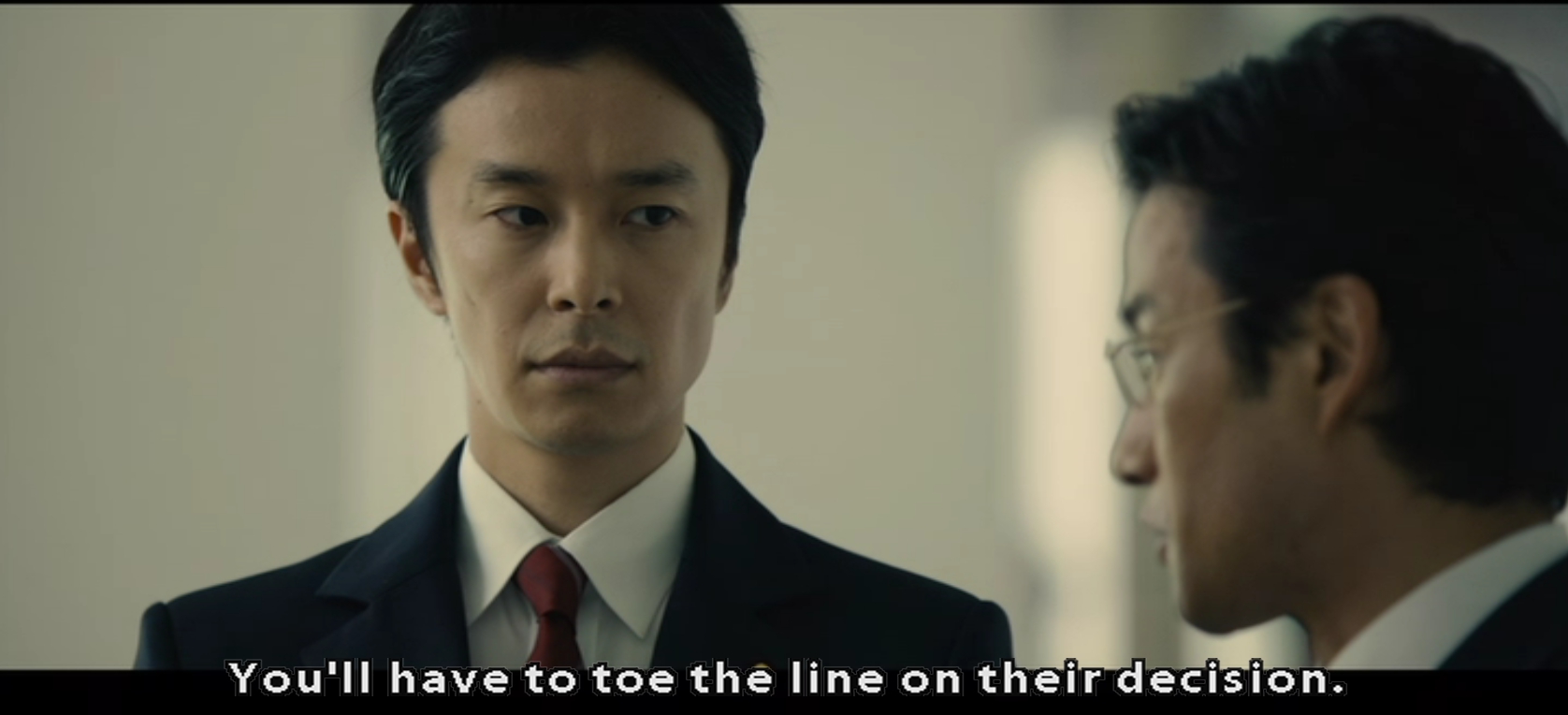
He serves as a counterpoint to the government, which under the old guard, is always wrong. As Godzilla moves into the city, they wonder which governmental department's jurisdiction is comes under. The directors love smash cuts that underline the difference between governmental decree and reality. Literally just as the Prime Minister says that the creature won't be able to move about on land, we see the nascent Godzilla come ashore. As a self-evacuation plan is formulated, and every effort will me made to control traffic. As in 2014's Godzilla, there is another smash cut to utter deadlock on the roads.
The presence of the US is gradually felt more and more, like an oppressive hand bearing down. At first, the US is discussed in terms of backup to military action. Then we learn that they are claiming all the samples Godzilla has left behind. Then, following a telephone conversation with President Ross, the Prime Minister comments “A lot of unilateral requests. Typically Americans.rdquo; This is a more modern update of the political scenes in Return of Godzilla, in which the nuclear powers Russia and America both argue with the Japanese PM about nuking Godzilla. In 2016, we have a similar conflict, with the Russians and Chinese on one side, and the Americans on the other. Unfortunately, the UN agrees that if Japan cannot handle Godzilla, someone gets to drop a nuke on it. Fortunately, Japan has a lot more international swing that was presented in Return. In Shin Godzilla, Kayoko Patterson comes into the picture. Being both American and Japanese, she is more sympathetic to the Japanese government than the average American, and has the connections to release American information to the Rando. But Godzilla is not directly the fault of America, rather the creation of Goro Maki, who was employed by the American DOE, but acted on his own. America is not a fully trustworthy ally, but a large presence that cannot be ignored. However, it can be bargained with. Which is very different from the absolutist political climate in 984. Shin Godzilla feels more nuanced, more realistic, like there is a larger and more complex world outside what we are shown on screen.
In Legendary Godzilla, a Japanese professor working for Monarch (primarily an American organization) brings the name Godzilla from Japan, but doesn't refer to the name's origin. Goro Maki is apparently from Odho Island, the island Godzilla first landed on in the 1954 film, unreferenced in the franchise then. He adapted the name from Odho Island's obscure mythology.
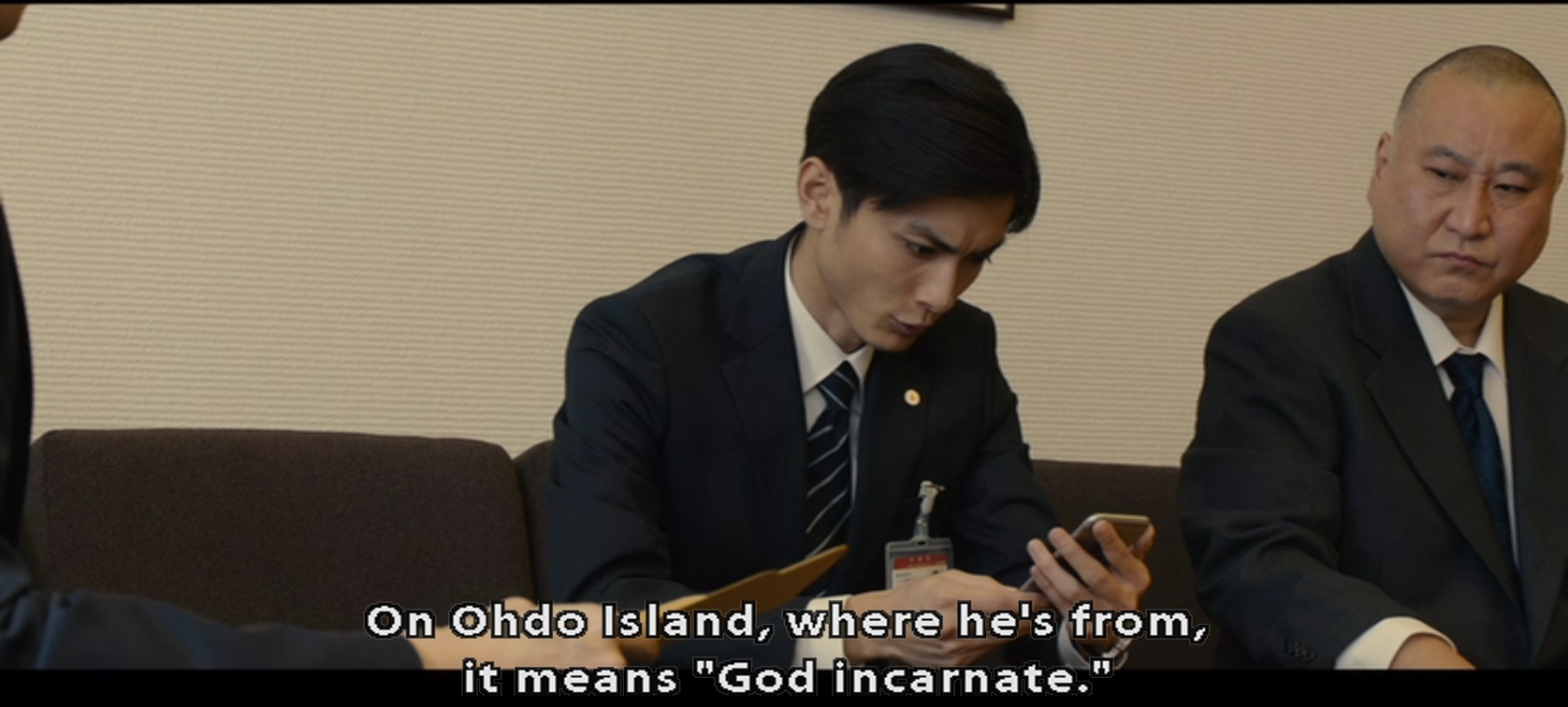
Godzilla itself, as with the Skullcrawlers in Kong: Skull Island, takes a certain amount of inspiration from Pokémon. Which I suppose is fair, since the main concept of Pokémon is to have Godzilla style monster vs monster fights. Shin Godzilla is self-“evolving,” like a Pokémon. However, the changes are properly referred to as mutation, rather than evolution. This sort of changing creature is well-established in earlier films in the series. Mothra, which has larval and adult forms, Hedorah and Destoroyah all changed forms. It is an important implication that all three of these creatures end up with wings. One of Rando’s scientists hypothesizes that Godzilla could, if given enough time to mutate, develop flight. But Godzilla has always previously kept to a single form. And I like the fact that its initial forms, the lungfish, and its initial upright mutation, all look awkward. It doesn't look like it has fully adapted to the land until its last form, the familiar upright stance with the toothy, dinosaur-like head.
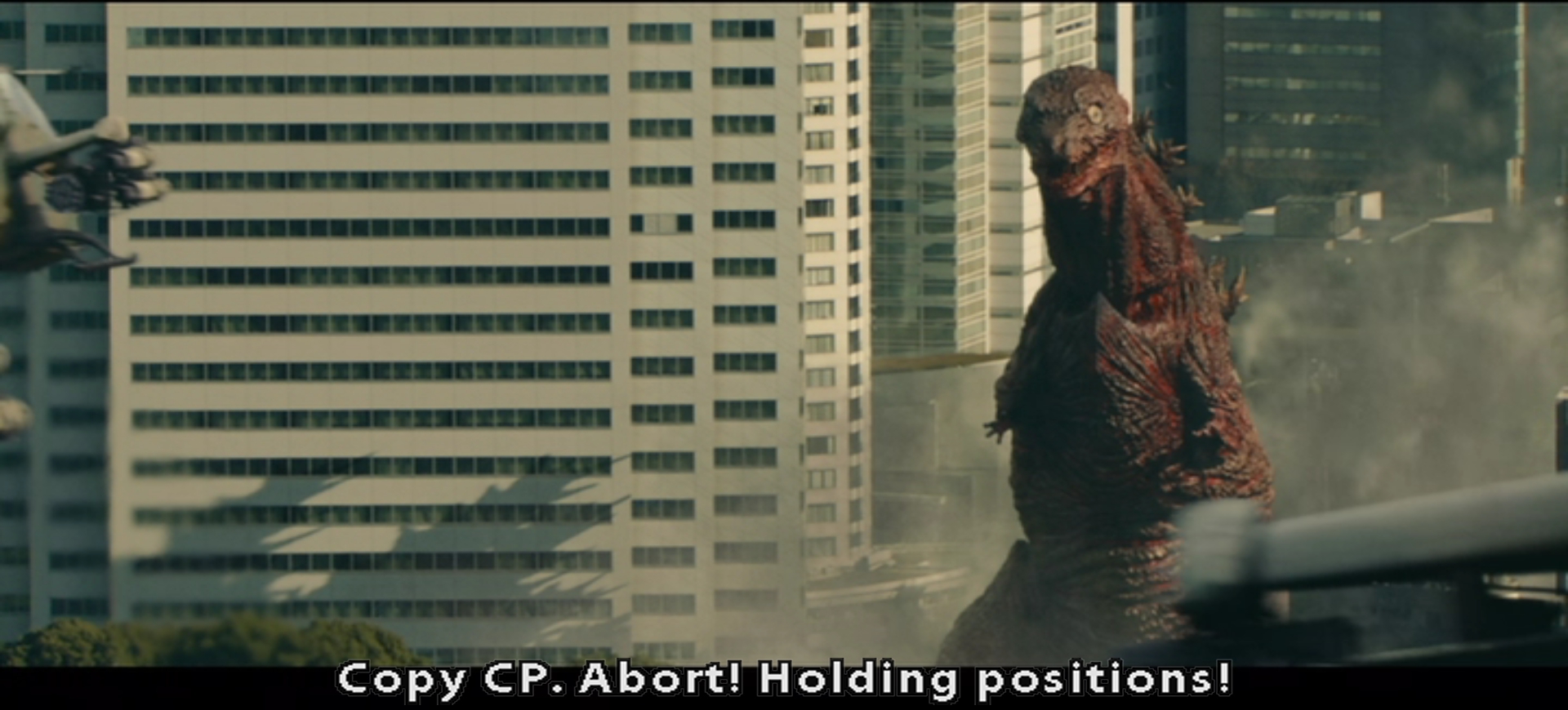
The directors do an excellent job of making their CG critter feel enormous. Mostly, Godzilla is seen in parts, often too large to be contained in the frame. When it is seen as a whole, it’s from far away. This is also the most tortured Godzilla yet put on screen. Godzilla radiates a red hot glow from its interior, as if it were a walking volcano or hot lava field. The skin of the walking form is knobbed, recalling the keloid-like skin of the 1954 original, and also the appearance the pillow lava. Its arms are smaller than ever, and don’t move. The teeth are huge and jagged. Overall, it’s a terrifying new look for the King of Monsters.
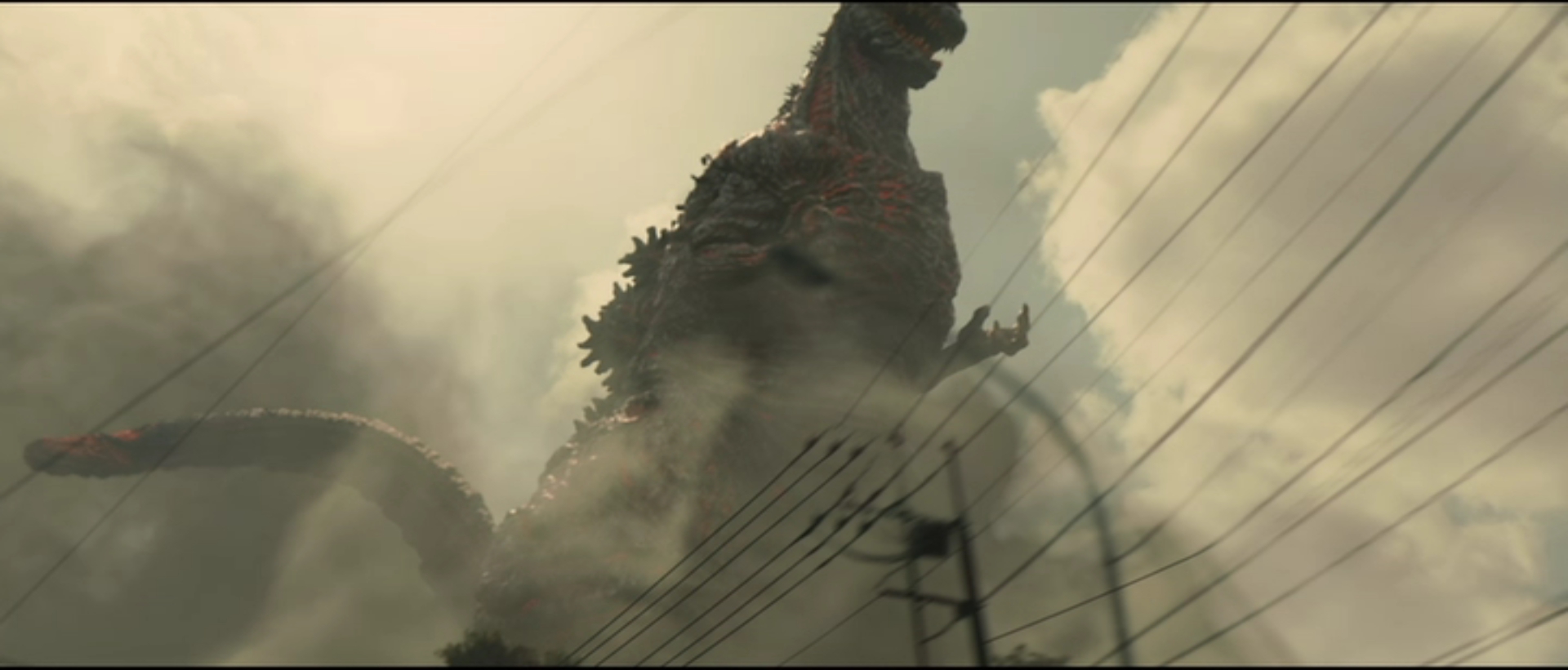
Of particular note is its tail. It's enormously long. It’s also the first glimpse we see of Godzilla. But more than any other part of Godzilla, the tail changes. When Godzilla first comes ashore, it has a flat tail oddly like King Ghidorah's. It even seems like it's the right color.
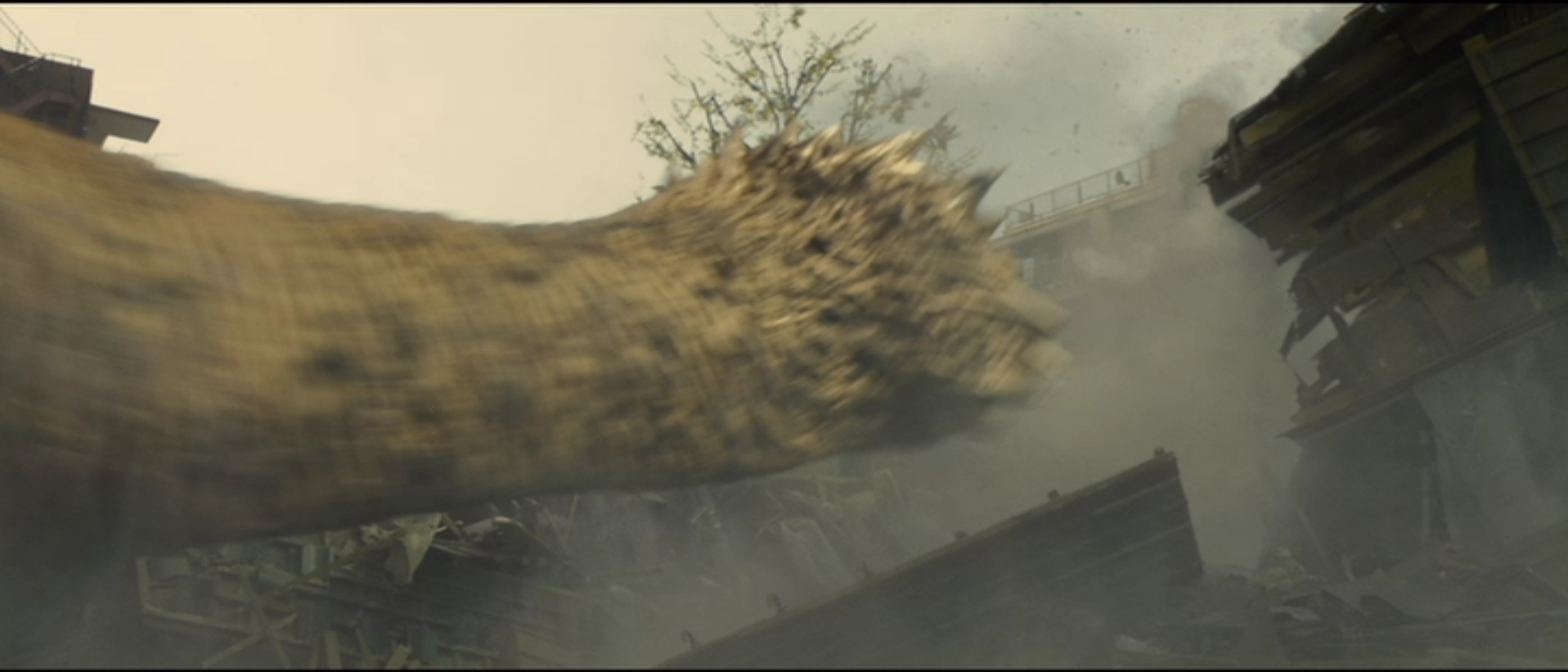
Later, when Godzilla achieves its upright configuration, the tail looks very different. It’s been speculated that this is some sort of whale skull, but given everything, this seems to be the beginning of a second head. We later find out that even when Godzilla’s back lasers fail, it can use its tail to direct destructive energy to devastating effect.
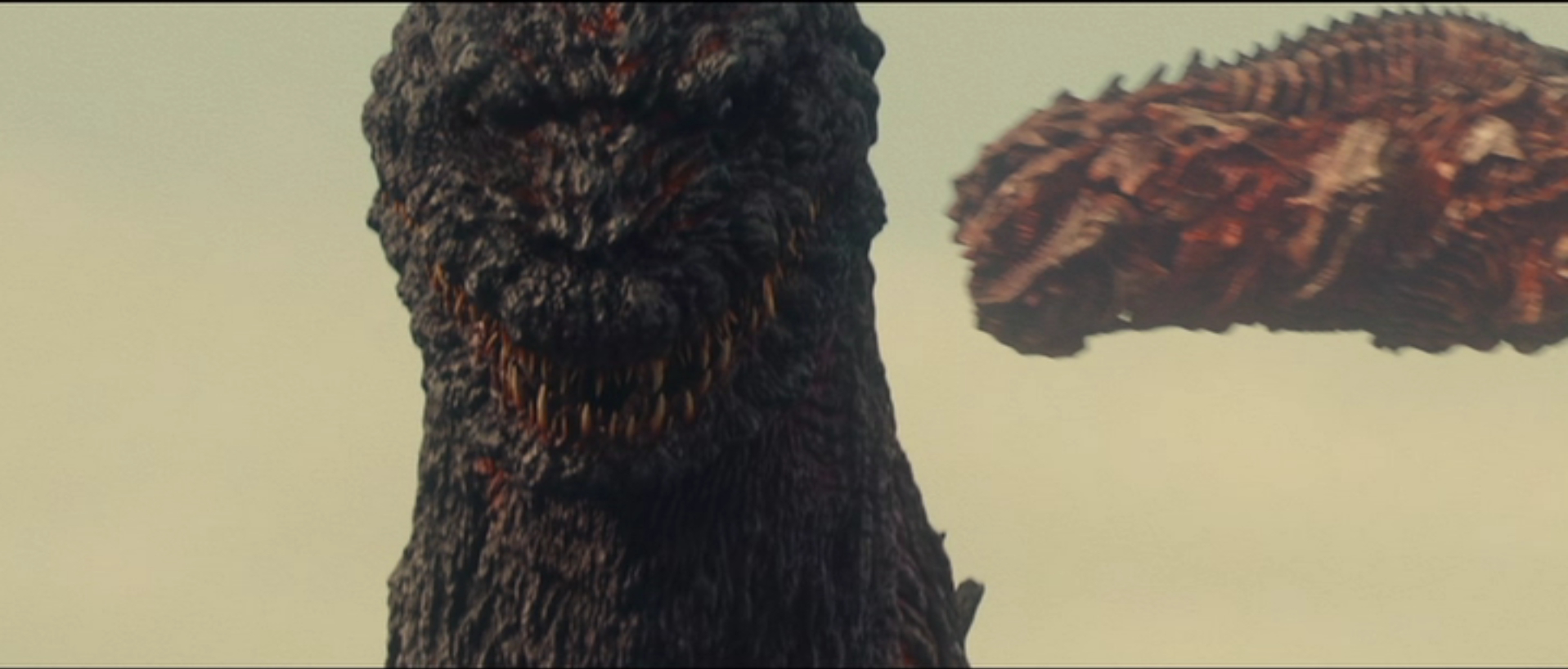
The final shot of the film is of the tail, which is now developing into smaller, independent, human-like Godzillas. They appear to be human-sized, mostly of human form, but with the maple-leaf spines to diffuse the nuclear fission in them. And they are darn creepy. Was Godzilla stopped in time? Could some of these horrible things have escaped in the confusion?
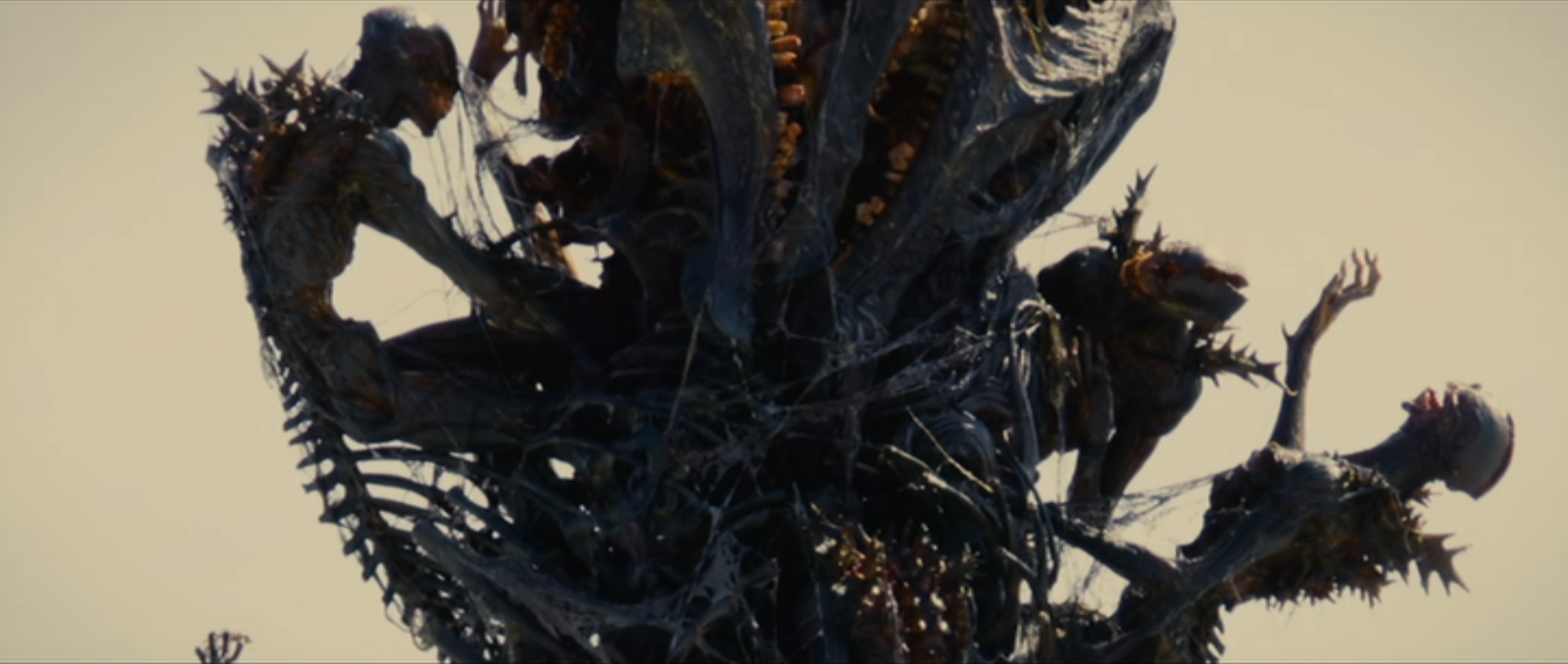
Godzilla kills. It's a walking, evolving disaster, and anyone in its way is destroyed. This is made quite clear early in the film when Godzilla topples a building, with a couple still packing for their evacuation are in a building when it falls. I don't expect they survived. There’s nothing soft-pedaled about the destructiveness of incarnation.
The other real strength of the re-design is that Godzilla has surprises up its sleeve. Or down its throat. As previously stated, Godzilla’s initial rampage in lungfish and then first erect form are not met with effective military action. But then the Americans drop bombs on Godzilla. And, like he always does, Godzilla responds by unleashing unimaginable fury.
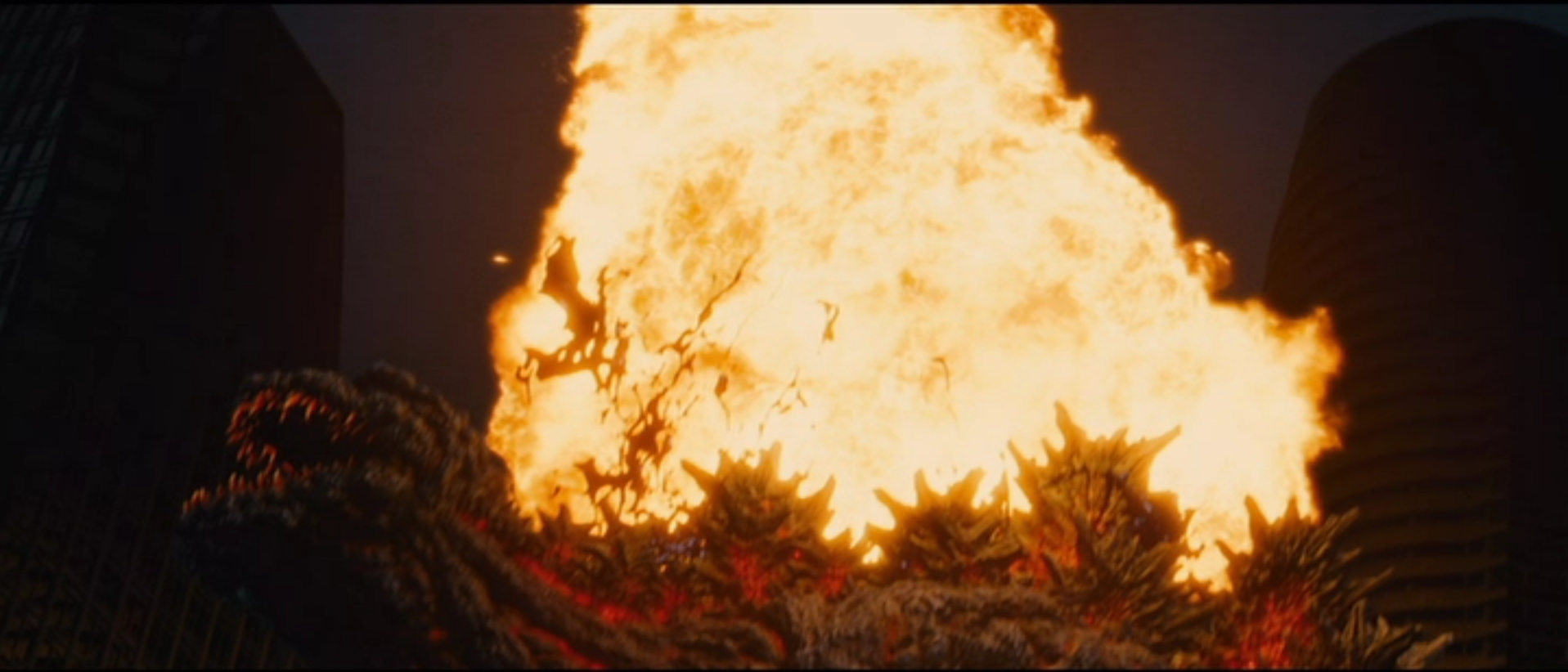
Godzilla films have always had the destruction of cities as their centerpiece. The destruction in Shin Godzilla is awe-inspiring, even by Godzilla standards. Godzilla's fiery output is astonishing vomiting forth a massive river of fire. The fiery breath comes hosing out of Godzilla’s mouth, engulfing much of the city. Then, separating its lower jaw, it focuses that torrent down into a laser-like needle of destruction, and proceeds to cut through every building in sight. The destruction is constant and nearly overwhelming. I had a visceral reaction to it when I first saw it in the theater, astonishment at so much destruction.
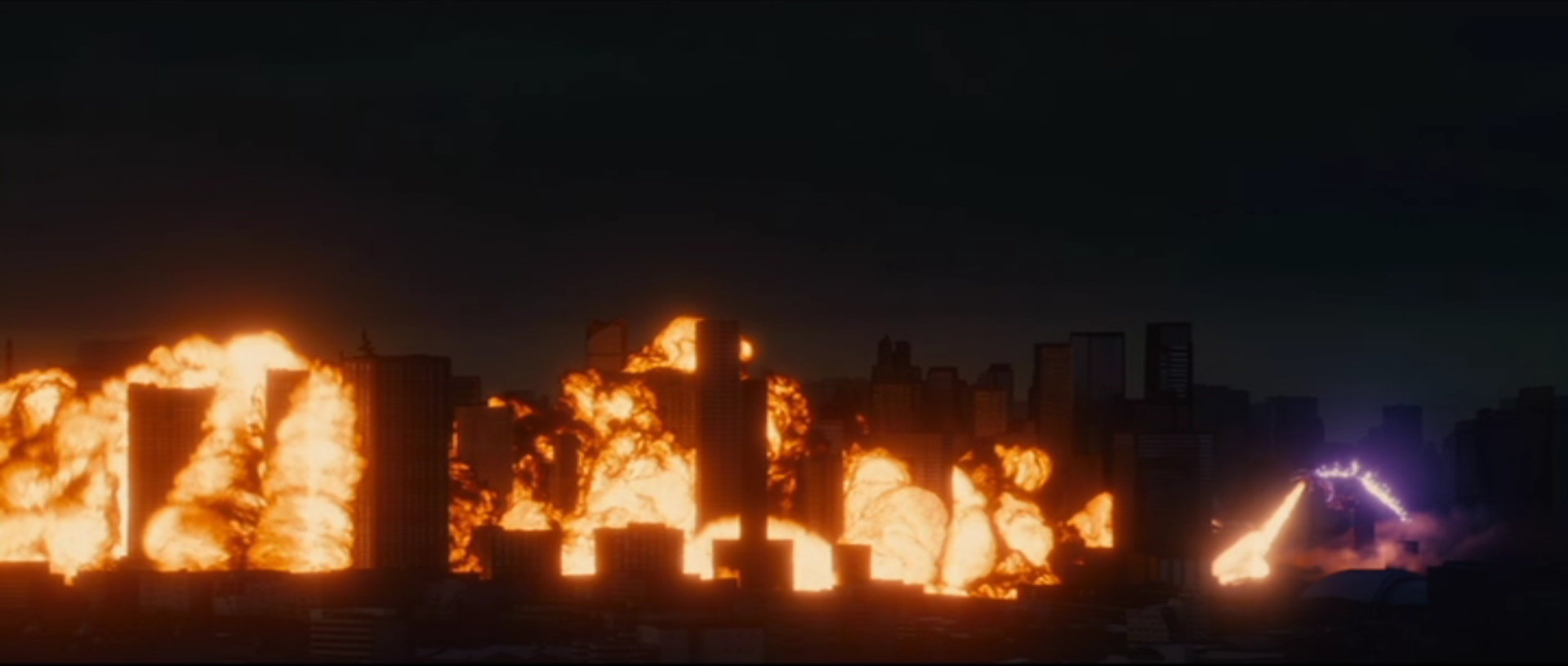
Like the Legendary Godzilla, as well as Godzilla vs Mechagodzilla and Tokyo S.O.S., there is an anticipatory indication when Godzilla is going to unleash his atomic breath. Godzilla's glow turns purple, giving the audience that delicious ten seconds of anticipation. There are a few new tricks up Godzilla's sleeve. It can concentrate its nuclear fire into a massively destructive beam, cutting through buildings, extending out perhaps two or three kilometers. And, because the film makers know their stuff, they make sure that they destroy the same theater Godzilla did in 1954.
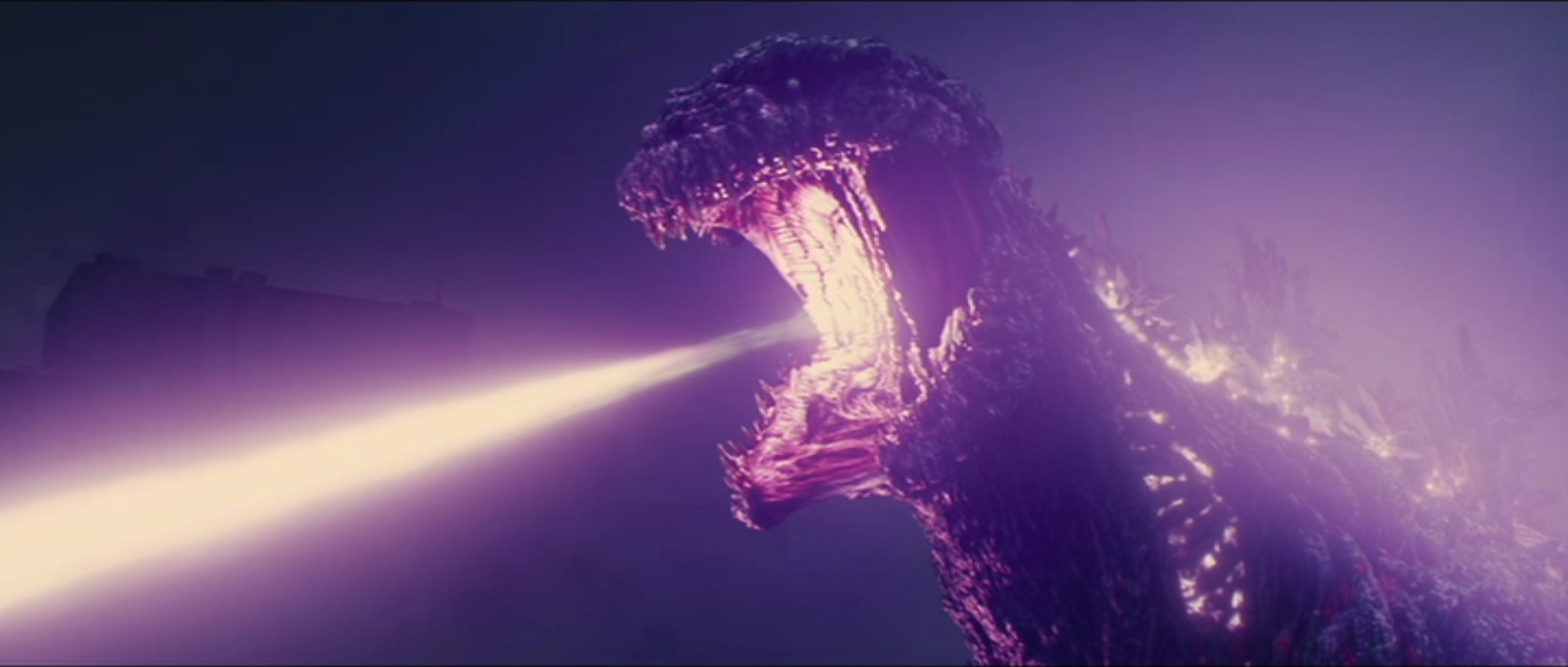
But that’s not all. Attacked from behind, Godzilla develops destructive rays from its back, knocking down the American B-2 Spirit bombers that unleashed the MOP bombs on it. It’s a new trick for Godzilla, surprising and frightening, making an assault on the creature all the more difficult. It can shoot down anything behind it, while its atomic breath is able to carve anything else out of the sky.
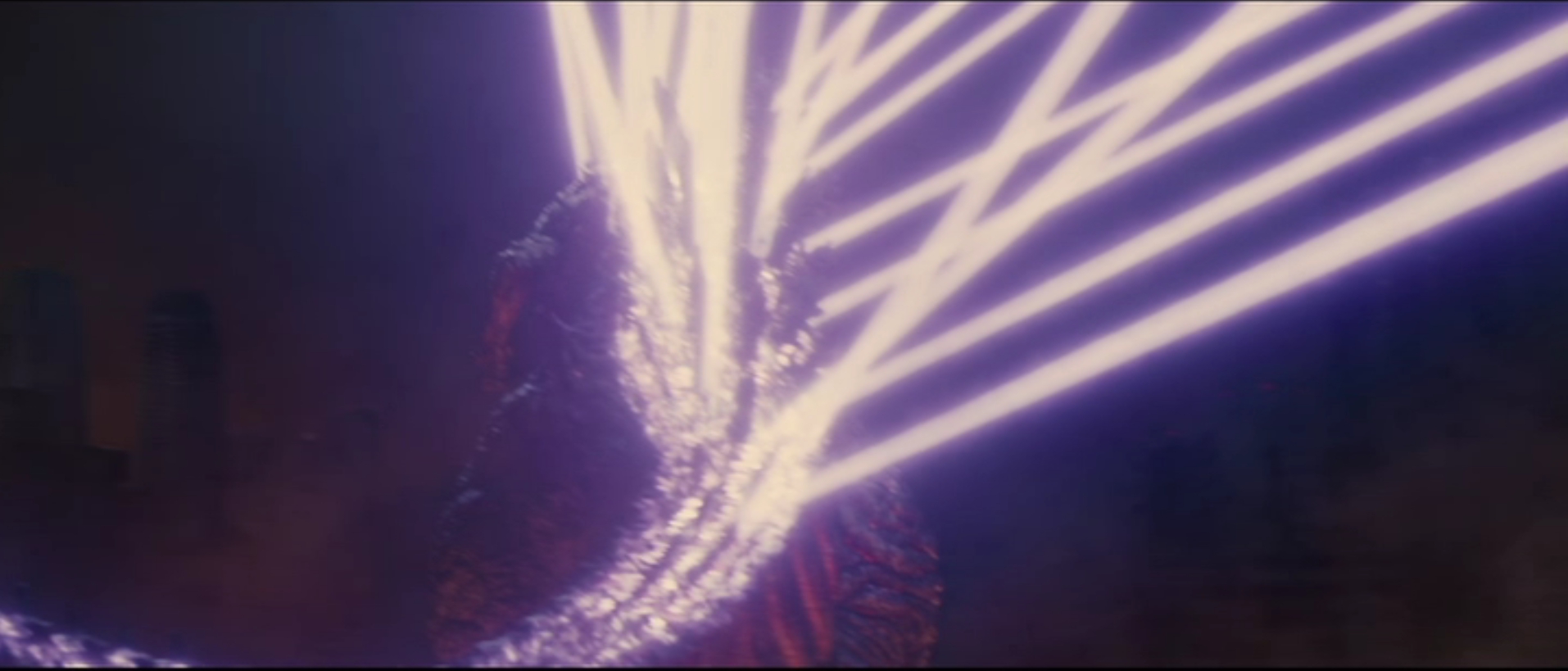
Even though this Godzilla levels buildings like the hand of God itself, the film doesn’t spend much time on the dead or dying. No scenes of children who make the radiation detector go nuts, no mother holding her children to her during the fiery holocaust. But it is not shy about showing the distress of people who are displaced because of the attack. We see a lot of people with filter masks, spend time in a food line. Godzilla’s rampage does not happen to no one. It uproots families, destroys homes, and has consequences.
I'm going to step back from what I said in my earlier post. The military is, although more valorized than it was in Ishiro Honda's day, it’s still there for show. It doesn't do anything other than show the scientists how Godzilla works. Godzilla drops a bridge on a tank division, and he smokes two of the three bombers that attack him. It is only with sustained assaults with multiple missiles that we are able to exhaust Godzilla enough to start the process of overheating his internal reactor.
As I have said before: This is a Japanese Godzilla film that knows the history of the franchise. So it solves its plot problem in the Japanese fashion: by sciencing the shit out of it. Against an international coalition that wishes to drop a nuke on Godzilla if Japan cannot solve their problem. Which makes for a good, tense third act. The threat of a nuclear detonation, in no way guaranteed to destroy Godzilla, makes an excellent countdown.
Whoever wrote the subtitles seems to have a wrong impression about what actually happens to stop Godzilla. Godzilla gets pumped full of blood coagulant (an idea first introduced in
Godzilla is then pumped full of anticoagulant. I have a little bit of trouble with this, but only because everyone refers to it as 'freezing' Godzilla. It's an attempt to induce a reactor scram, or shut down. This means actually increasing Godzilla's heat by thickening its blood coolant system until it realizes it's in danger, and its internal reactor shuts down, and it no longer has the energy to supply its own metabolism. So freeze is an inadequate word to describe the process for me. Two, the film uses the imagery of the Fukishima 50, who worked to keep the nuclear disaster under control. The use of the boom pumps is especially striking. But the film doesn't praise the people who get the job done, the boots on the ground. The first wave of boom pumps, and I assume their operators, is annihilated, but the politicians press on. They get the glory, not those who risked themselves.
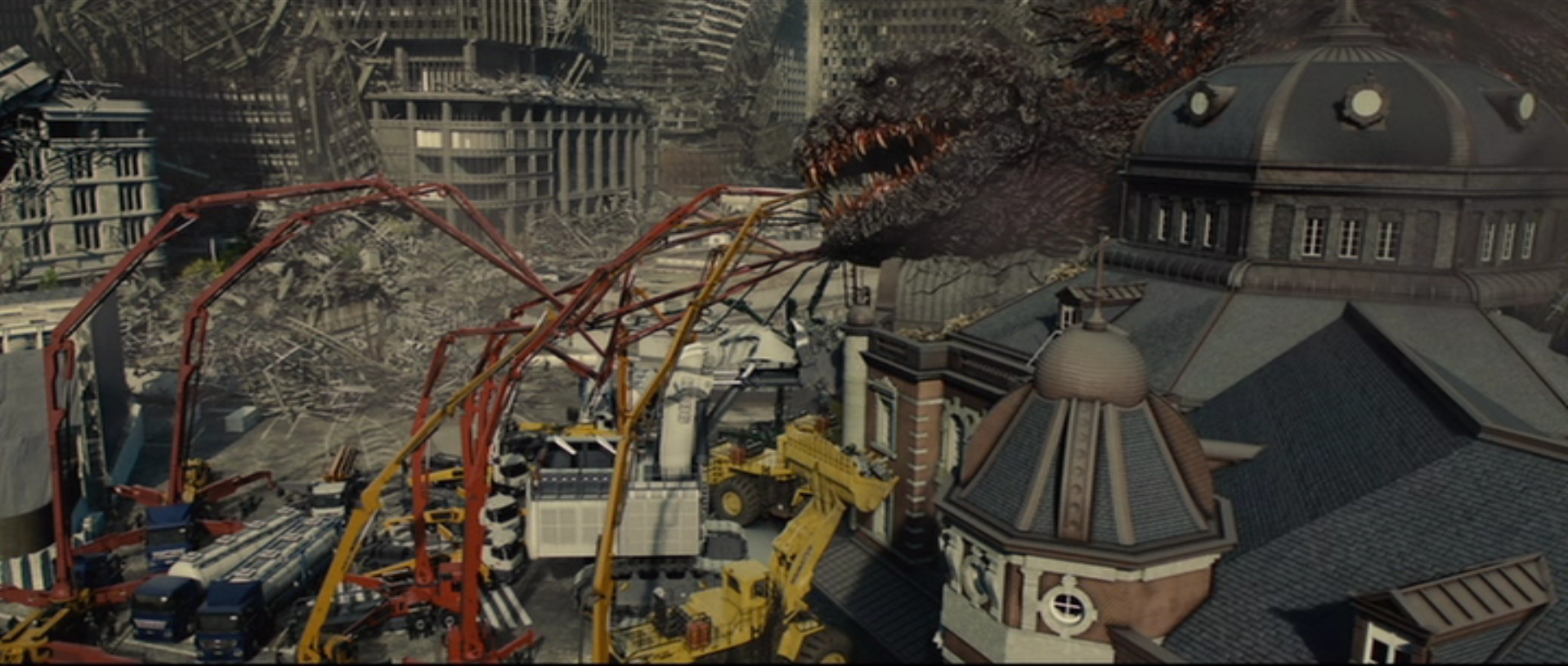
It’s interesting to see the difference between the two points of view concerning nuclear weapons so close to each other. After all, we don’t know how close 1954 Godzilla was when it was awakened by nuclear testing, and here, it seems accepted that a nuke will destroy Godzilla. But the Legendary took a nuke to the face and was only slowed down. Maybe it’s that Americans like their nukes more than the Japanese, and therefore American Godzilla needs to be immune to them because we’re likely to drop one on him anyway. Or maybe the Japanese don't think anything will survive a direct hit form a nuke, having a bit more experience with them.
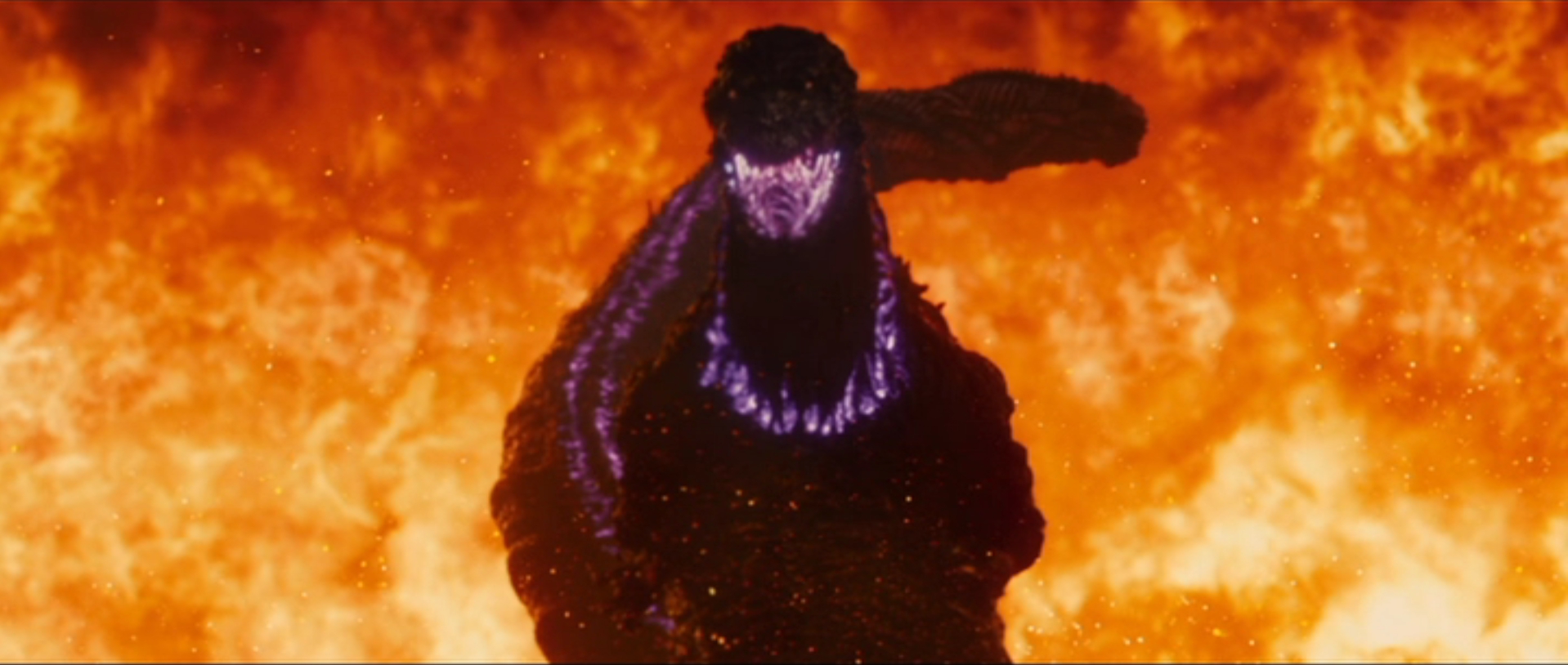
A welcome change to the home video release is the elimination of the titles from the screen. Now everything and everyone that is identified is done so in smaller, discrete supertitles which do not block what’s going on, or crowd the subtitles. Thus, it’s much easier to get the joke that Rando is the “Cabinet Minister of State fort Special Missions Giant Unidentified Creature United Response Task Force HQ Bureau Chief & Deputy Director" as he’s talking about something else with the subtitles separated.
I enjoyed Shin Godzilla, both for its fresh take on Godzilla, and its demonstration that something new can be brought to the franchise. I'm very excited that we will have two Godzilla franchises, both the Legendary, as well as Toho's anime trilogy, beginning with Godzilla: Planet of the Monsters, released in November. Shin Godzilla stands as one of my favorite Godzilla films, both for the impressive monster action and the excellent performances from the human actors.
 The 1974 version of Atlas Comics (from Seaboard Publishing) was another attempt to compete with Marvel and DC that did not last long. No comic or magazine they put out lasted more than four issues. As there was apparently some sort of mandatory swamp monster requirement for every seventies comic publisher, they introduced their own. Meet the Bog Beast.
The 1974 version of Atlas Comics (from Seaboard Publishing) was another attempt to compete with Marvel and DC that did not last long. No comic or magazine they put out lasted more than four issues. As there was apparently some sort of mandatory swamp monster requirement for every seventies comic publisher, they introduced their own. Meet the Bog Beast.